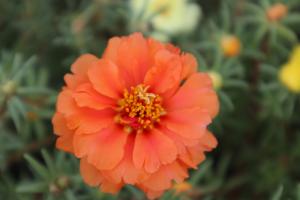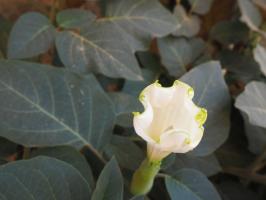Introduction
Tomatoes are popular vegetables that are used in a wide range of dishes around the world. They are also an important source of vitamins and minerals. While growing tomatoes may seem like a simple process, it is essential to understand the process of tomato plant pollination to ensure a healthy harvest. In this article, we will explore how tomato plants pollinate and the steps you can take to ensure optimal pollination.
Flower Anatomy
Before discussing tomato plant pollination, it is necessary to understand the anatomy of the tomato flower. The tomato flower has both male and female reproductive organs. The stamen is the male reproductive organ, while the pistil is the female reproductive organ. The stamen consists of the anther, which produces pollen and the filament that supports the anther. The pistil consists of the stigma, style, and ovary, which contains the ovules.
Natural Pollination
Tomato plants can pollinate naturally through the wind, insects, or other animals. The wind can shake the flower, causing the pollen to fall onto the stigma, leading to pollination. Insects such as bees and butterflies can also pollinate tomato plants by moving the pollen from the anther to the stigma. When an insect lands on the flower, it brushes against the anther, collecting pollen. As it moves to another flower, it drops the pollen onto the stigma. Other animals such as birds or bats can also be effective pollinators.
Hand Pollination
In some cases, natural pollination may not be sufficient, and hand pollination may be necessary. Hand pollination is the process of manually transferring pollen from the anther to the stigma using a small brush or q-tip. Hand pollination can be useful in situations where there are not enough pollinators or when growing tomatoes indoors. To hand pollinate a tomato plant, gently touch the anther with the brush or q-tip, and then touch the stigma with the same brush or q-tip. Repeat this process for each flower on the plant.
Cross Pollination
Cross-pollination occurs when pollen from one plant is transferred to the stigma of a different plant. Cross-pollination can result in hybrid tomato plants with a combination of traits from both parent plants. However, for those who prefer the purebred variety, cross-pollination can be a disadvantage. To avoid cross-pollination, separate different varieties of tomato plants by at least 10-20 feet from each other. Alternatively, cover the plants with a mesh netting to prevent cross-pollination.
Conclusion
Tomato plant pollination is a crucial aspect of growing healthy and flavorful tomatoes. Understanding the anatomy of the tomato flower, the process of natural and hand pollination, and the need to avoid cross-pollination are essential factors in ensuring a successful harvest. By following these steps, you can enjoy a plentiful supply of delicious and healthy tomatoes for years to come.

 how many times do yo...
how many times do yo... how many planted tre...
how many planted tre... how many pine trees ...
how many pine trees ... how many pecan trees...
how many pecan trees... how many plants comp...
how many plants comp... how many plants can ...
how many plants can ... how many plants and ...
how many plants and ... how many pepper plan...
how many pepper plan...






























